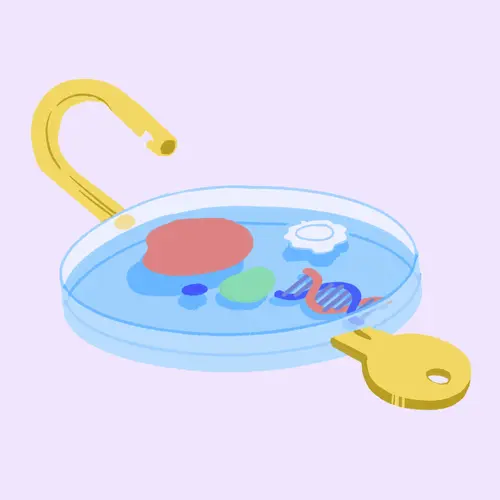Something touches your skin, and your immune system thinks it's under attack. It overreacts and sends antibodies to help fight the invader, called an allergen. The result is a red, itchy rash where the substance landed.
Your doctor calls this contact dermatitis. There are two types:
- Irritant contact dermatitis is caused by chemicals like harsh cleaners.
- Allergic contact dermatitis is just like it sounds -- your body reacts to an allergy trigger.
People who have allergies react to things that wouldn't bother most others. Anything from plants like poison ivy to dyes and fragrances found in everyday products might be allergens.
You could also have an allergic reaction to something in the air that settles on your skin, like pollen, chemical sprays, powders, fibers, or cigarette smoke. This is called airborne contact dermatitis, and it mostly happens on your eyelids, head, and neck. It can be hard for doctors to diagnose because it doesn’t look that different from the other type.
Skin allergies can also cause hives and swelling deep in your skin, called angioedema.
If you can't avoid contact with an allergy trigger, you can usually treat the rash and ease the itching. And you can't pass it to anyone else.
What Causes Skin Allergies?
The most common causes of skin allergies include:
- Nickel, a metal used in jewelry and snaps on jeans, makeup, lotions, soaps, and shampoos
- Sunscreens and bug sprays
- Medications you put on your skin, like antibiotics or anti-itch creams
- Fragrances
- Cleaning products
- Plants, including poison ivy
- Latex, which is used in stretchy things like plastic gloves, elastic in clothing, condoms, and balloons
- Chemicals
How do I Find Out What I’m Allergic To?
Your doctor can check to see what you’re reacting to, but finding the exact cause may be hard. Skin tests can only show what you're sensitive to. They can't tell what touched your skin in a specific spot on a specific day.
Doctors often use the T.R.U.E. test (Thin-layer Rapid Use Epicutaneous Patch Test). It's a pre-packaged set of three panels that your doctor will stick to your back. Each is smaller than a dollar bill and has 12 patches with samples of possible allergens. You wear them for 2 days. Then the doctor takes them off to see if you've had any reactions. You might need to come back a few more times, since some reactions could show up as many as 10 days later.
You might be allergic to something that isn’t in the standard T.R.U.E. test. To figure that out, your doctor may do more patch testing. They’ll choose substances you might contact in your work, home, or hobbies.
If you have a mild reaction in any patch test, you might need to follow up with a R.O.A.T. test (Repeat Open Application Test). It works a lot like the T.R.U.E. test, but you do it yourself. Put the suspected allergen, say, sunscreen, on your skin during the day in the same spot over several days. This can help confirm or rule out your sensitivity.
The dimethylglyoxime test looks for metal objects that have enough nickel to cause a reaction. Your doctor can test things in the office, or you can buy a kit to test jewelry and other items yourself.
How Is Contact Dermatitis Treated?
The best method is prevention. Find out what causes your rash and avoid it. You may need to wear gloves to protect your skin.
When you do have a reaction, try to ease the symptoms and prevent an infection. Don't scratch, even though that's a hard urge to resist. Over-the-counter products and home remedies can help relieve the itching and stop the swelling. Try these:
- Hydrocortisone cream
- Ointments like calamine lotion
- Antihistamines
- Cold compresses
- Oatmeal baths
- Talk to your doctor about what's best for your specific rash. For example, corticosteroids are good for poison ivy, oak, and sumac. They can prescribe stronger medicines if needed, too.
The rash will often clear up within a few weeks. But you'll still be allergic, and the redness and itching could come back if your skin touches the wrong thing.
Most skin allergies aren't life-threatening. But in some rare cases, a severe reaction called anaphylaxis might quickly spread throughout your body and make it hard to breathe. Call 911 if your lips start to swell or itch or you feel short of breath.

